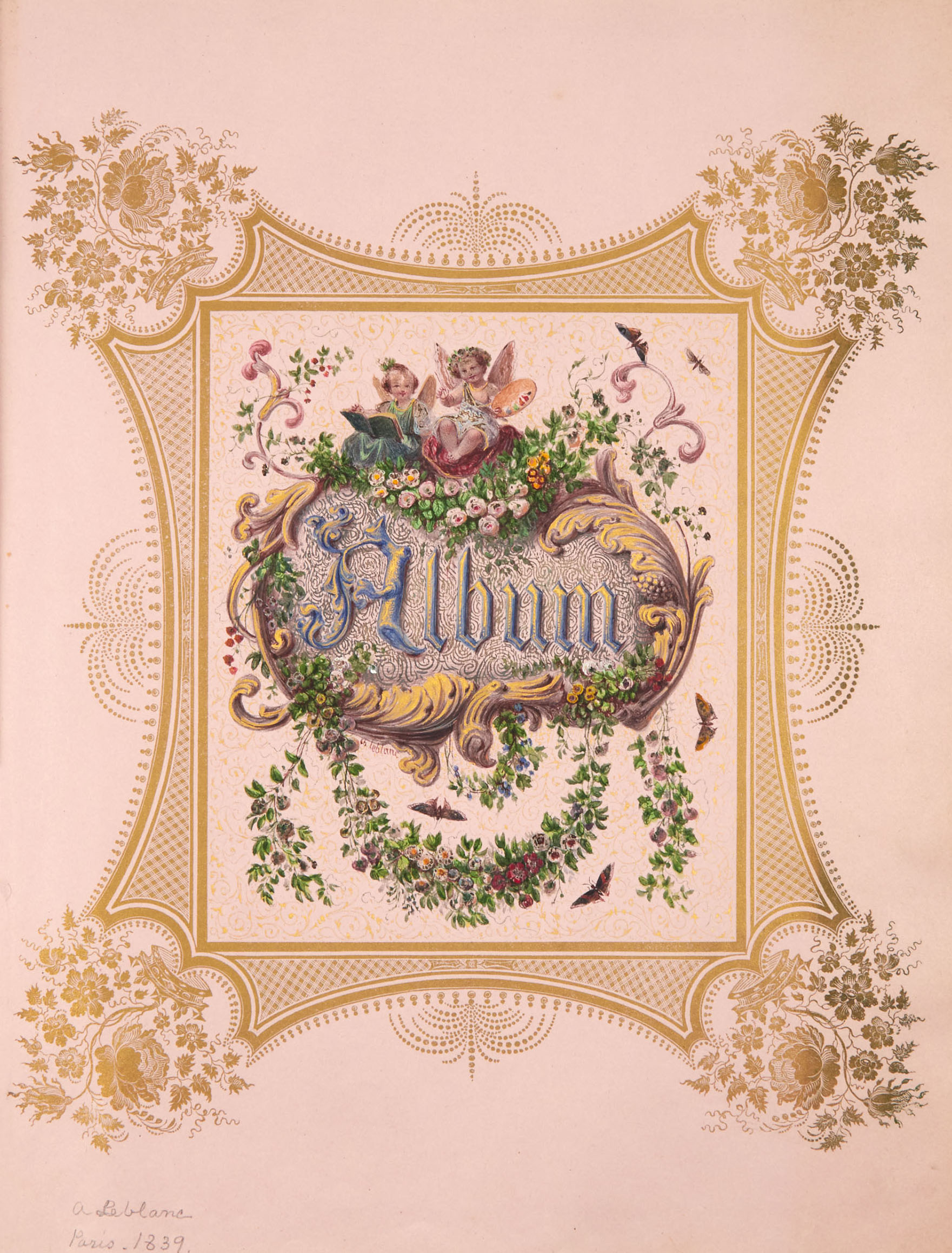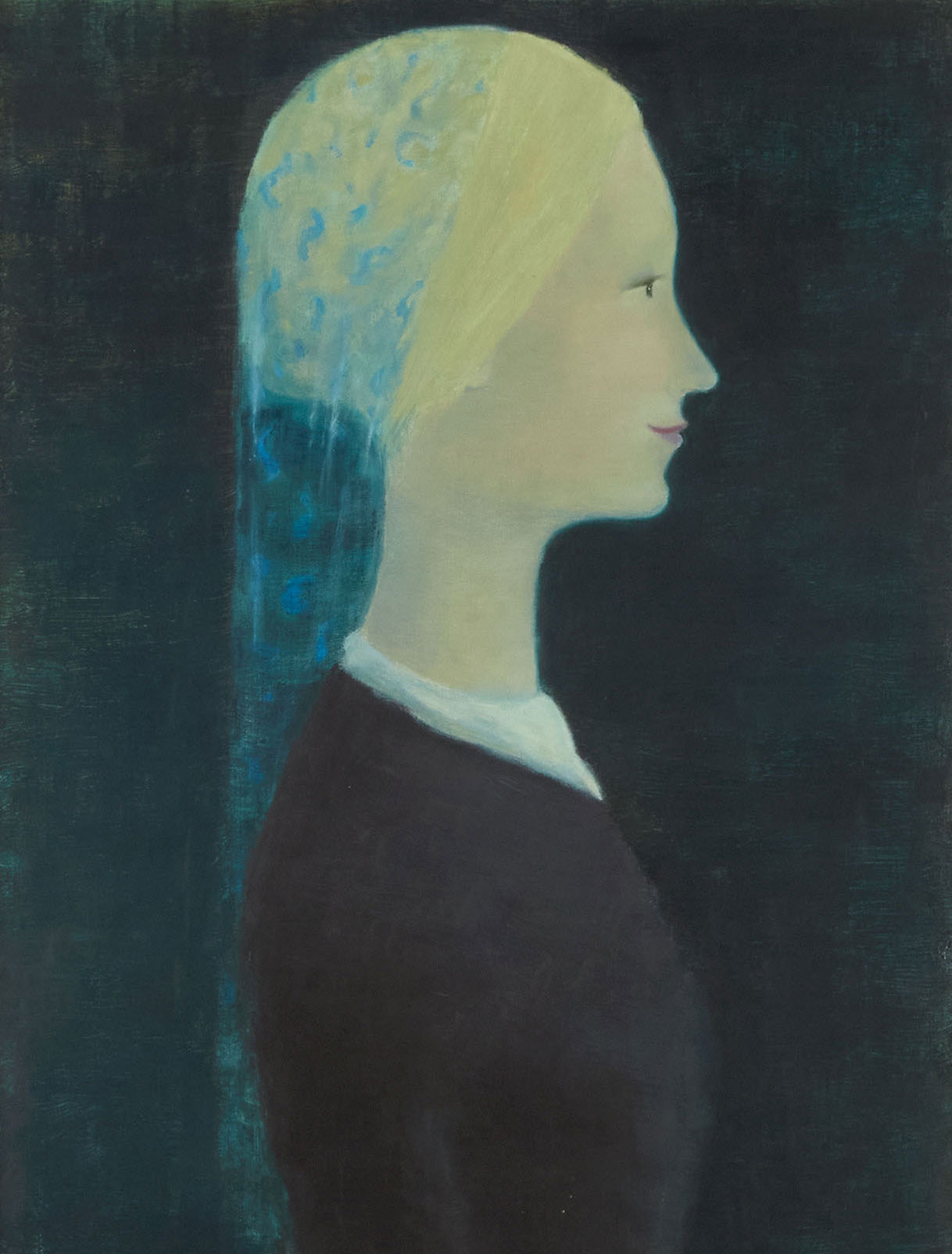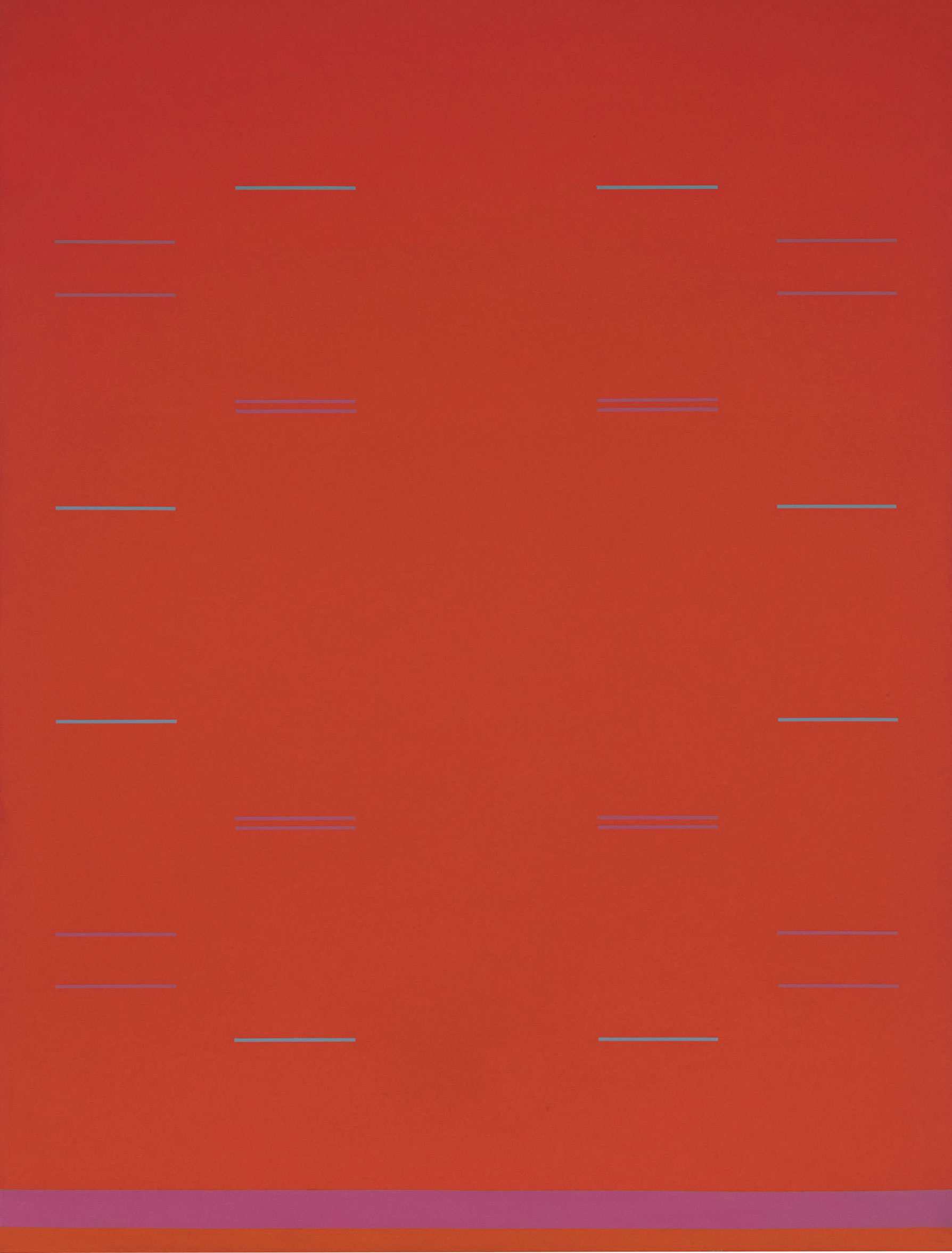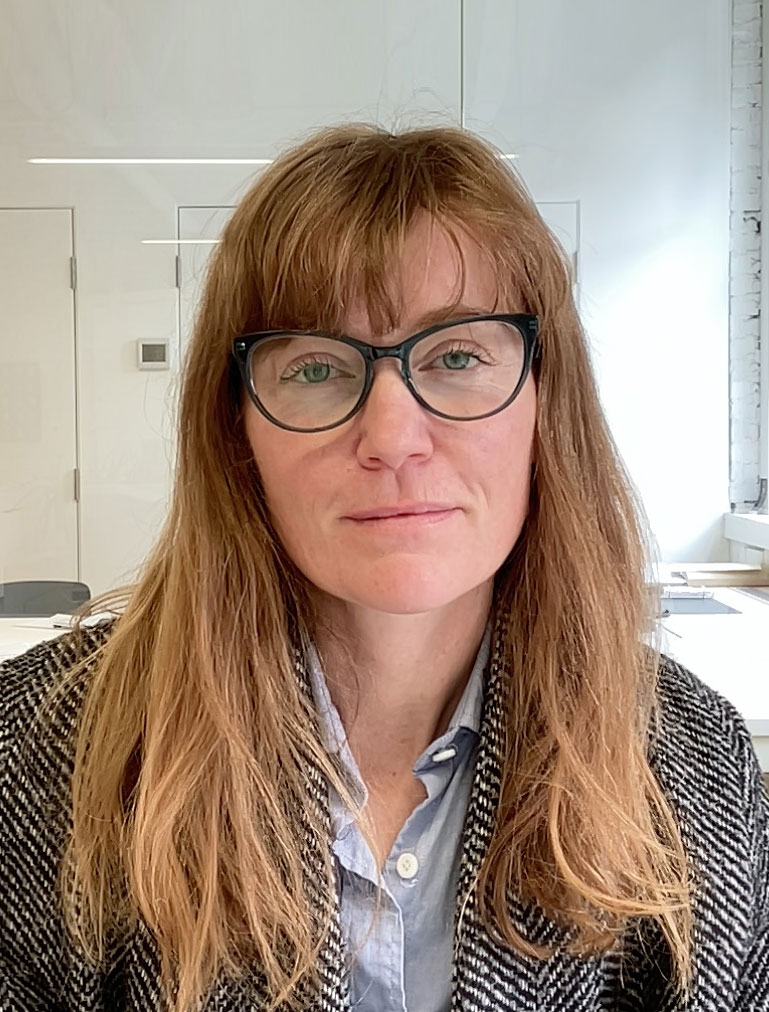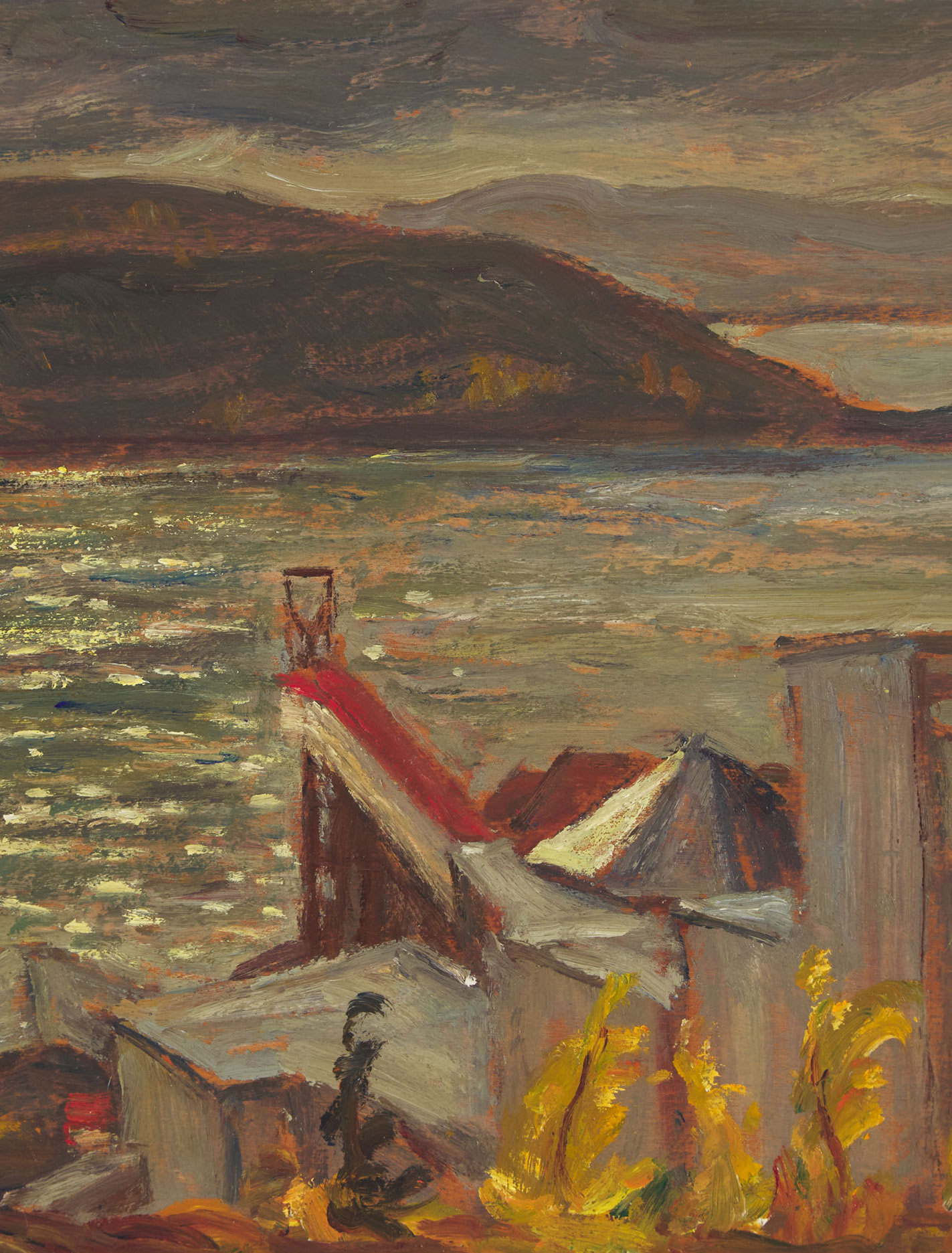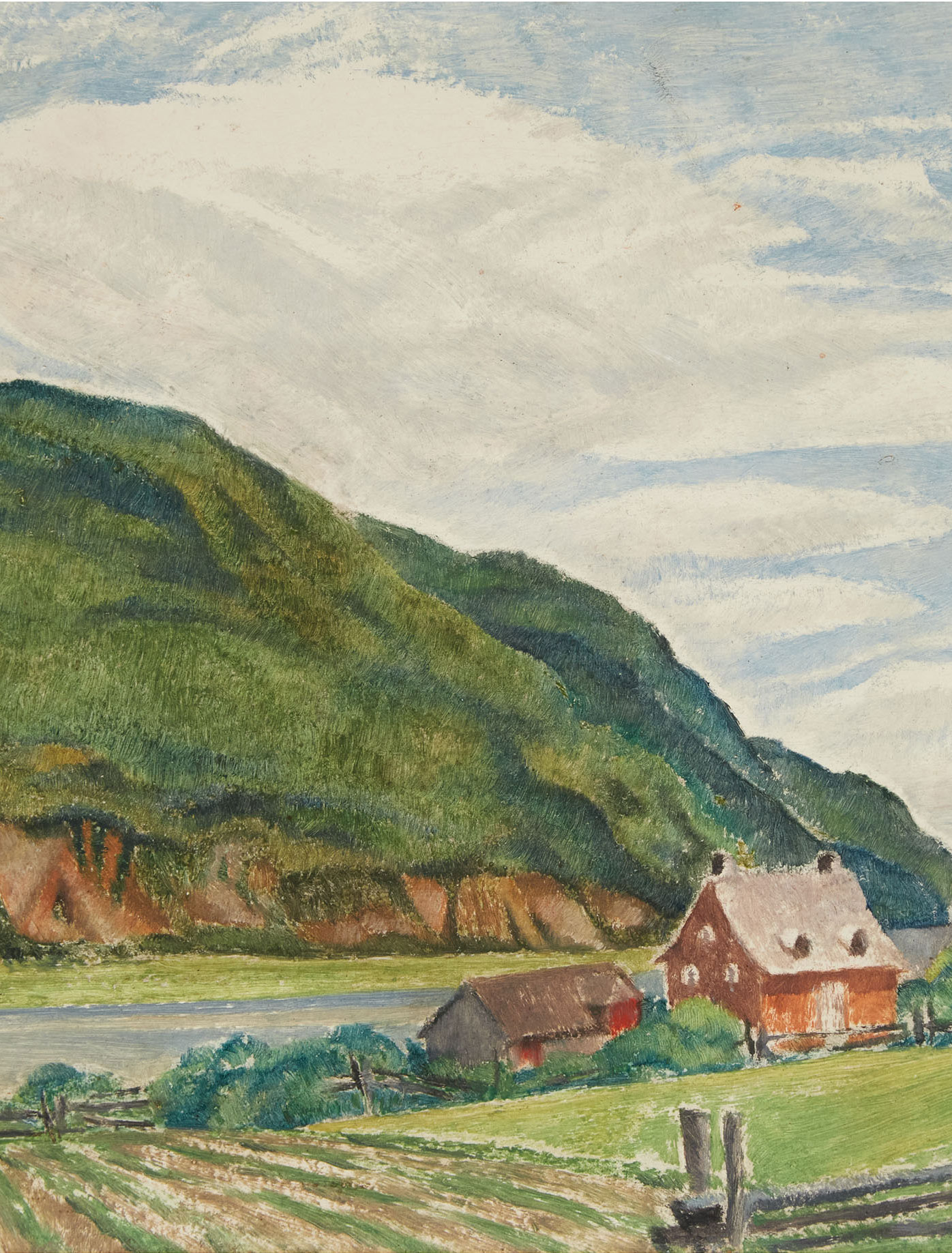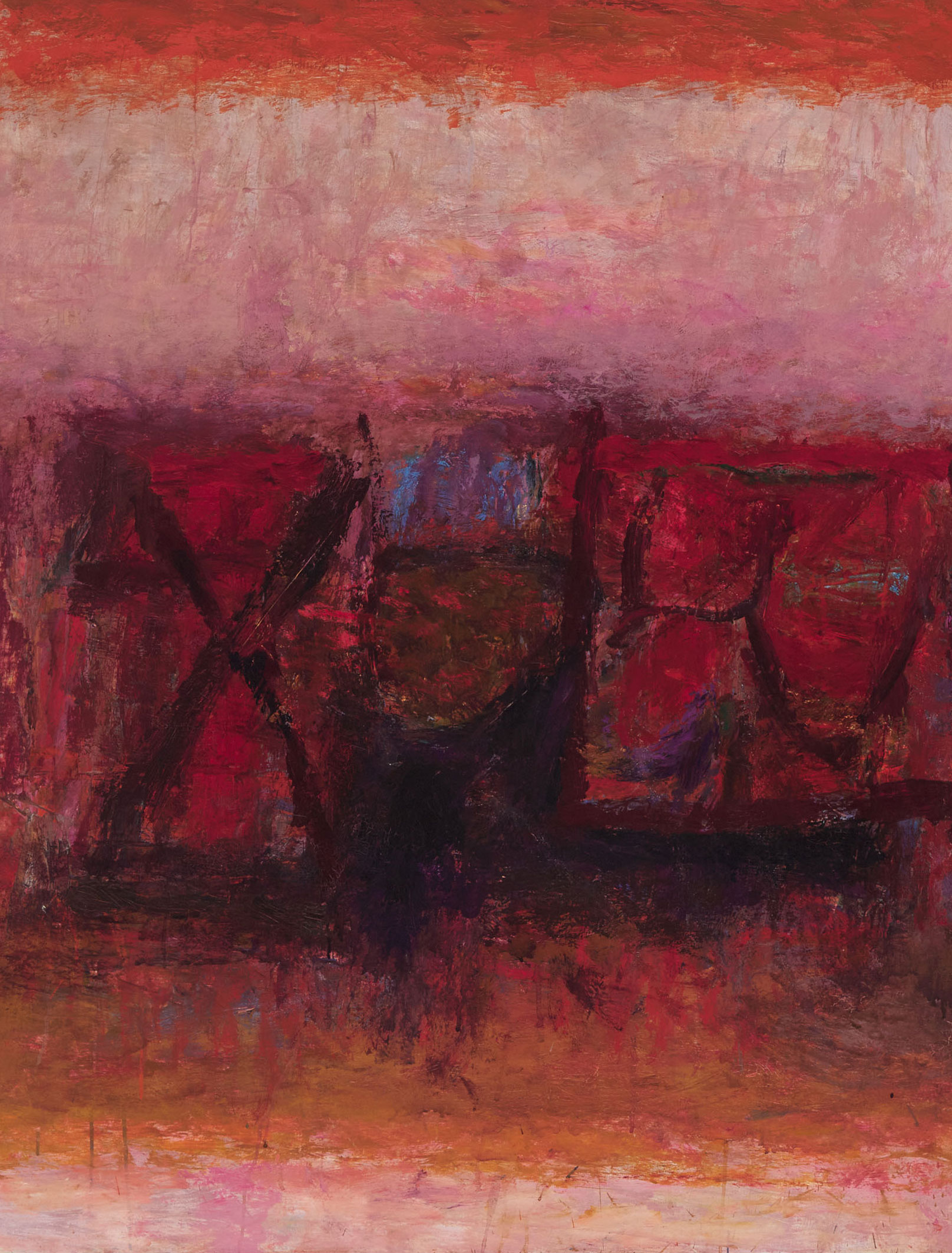Waddington’s is pleased to announce the 2024 edition of our Photographs Auction in Partnership with Contact Photography Festival, held online May 11-16, 2024.
The auction features a significant collection of photographs from the archives of Toronto’s former Deja Vue Gallery including masterworks by Richard Harrington, Edward Weston, and a rare portrait of Joan Baez by Yousef Karsh. Other highlights are drawn from important Canadian private and corporate collections and include a unique collaged gelatin silver print by Peter Beard, a portfolio of five Chuck Close self-portraits, signed works by Imogen Cunningham, mammoth prints by Edward Burtynsky, and two unique behind-the-scenes portraits by Jorge Zontal from the personal collection of provocative rock musician Carole Pope.
We are pleased to collaborate with CONTACT again and to offer a selection of contemporary photography including past CONTACT Photography prize winners such as Ken Lum, Dana Claxton, Shelley Niro, Suzy Lake, and Lynne Cohen will also be available. All proceeds from the sale of CONTACT lots will directly benefit the organisation and its dedication to exhibiting, analysing, and celebrating photography and lens-based media.
To mark the auction, we have spotlighted seven works, though we invite you to take the time to browse the full gallery. We also would like to point your attention to our interview with CONTACT’s Executive Director Tara Smith, who shares her top ten picks from the auction.
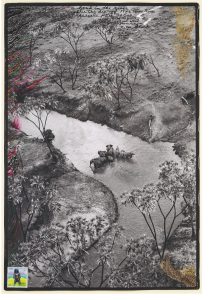
Peter Beard, A BEND IN THE RIVER AFTER THE DIE-OFF, 1976
Peter Beard grew up in an environment that venerated art and nature. His family, heirs to the Great Northern Railway Company, settled in Montauk, New York in the late 19th century and amassed a large collection of realist paintings. The desire to depict the reality of nature in all its glory and suffering inspired Beard in his own career in photography, where the artist would carefully document diminishing wildlife populations throughout the African continent.
Harbouring an interest in naturalism in his youth, Beard began collecting and scrapbooking elements of nature he found indelible – leaves, animal skins, bone, and blood. The artist’s draw to nature led Beard to travel across Africa at age 17, Voigtlander camera in hand, with the great-grandson of Charles Darwin, Quentin Keynes. (1) The awe-inspiring trip would be the first of many for the photographer as he would take up residence in Kenya and begin to note the brutal, rapid decline of the wildlife population.
Beard took particular interest in the Tsavo River region of Kenya, where he befriended the warden of Tsavo River East National Park, Bill Woodley, in 1961. Encountering the likes of hunters, poachers, and nature conservators, Beard quickly noted the unsustainable environment inhabited by the elephants and photographed his findings in his 1965 book “The End of the Game – Last Word From Paradise.” The book would bring the photographer international acclaim from fellow authors and artists including Kurt Vonnegut, The Rungstedlund Foundation, Salvador Dalí, and Francis Bacon.
A Bend in the River After the Die Off, 1976 by Peter Beard is one of the artist’s most iconic and well-known images – depicting the few surviving elephants of the Tsavo River National Park drought in the 1960s and ‘70s. In this particular work on offer, Beard draws on his childhood journaling by personalizing the print via annotations with collage elements and recollections from his time spent in the Tsavo River region. When preparing for the 2013 dedicated auction of his photographs at Christie’s New York, Beard reflected on his experience capturing A Bend in the River After the Die Off, 1976 stating: “Kurt Vonnegut told me once that when he witnessed 30,000 people die at Dresden, he felt as though he owned the whole horror, that the weight was on his shoulders. That was the way I felt about Tsavo.”(2) As the devastation continued in the Tsavo River region, Beard would go on to publish the second edition of The End of the Game which included the unaltered version of this photograph.
(1) Margalit Fox, “Peter Beard, Wildlife Photographer on the Wild Side, Dies at 82,” The New York Times, April 19, 2020
(2) Into Africa: Photographs by Peter Beard, October 3, 2013
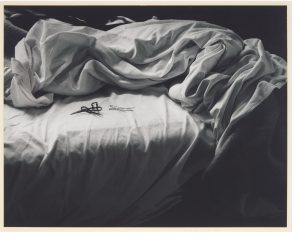
Imogen Cunningham, THE UNMADE BED, 1957
With varied subjects including portraits, nudes, florals, and street photography, Imogen Cunningham was a prolific artist. Though born in 1883, Cunningham was a pioneer of the 20th century as well as a feminist icon. Cunningham disregarded the opposition between men and women. Alex Greenberger writes that “Early on, in 1913, she wrote a manifesto called “Photography as a Profession for Women.” She insisted that women were just as physically able to undertake the then-laborious process of shooting and developing photographs and that the two genders had different but equally worthy forms of expression.” (1)
Cunningham wanted to be a photographer from a young age. At the time, photography was not offered as a course, so she enrolled at the University of Washington as a chemistry student to better understand film and the chemical processes of photography. After a two-year stay in Dresden, Germany, under the tutelage of Dr. Robert Luther at the Technische Hochschule, Cunningham became proficient in platinum printing. Returning to the United States in 1910, the artist started her own studio in Seattle, producing images in line with the Pictorialist movement.
After a brief stay in San Francisco, Cunningham settled in Oakland, where her initial interest in floral photography began in the late 1910s. Occupied with raising her children, Cunningham was tethered to her home, which sparked an interest in gardening. Far from impeding her artistic practice, this newfound passion led her towards a new vein – her floral works. Magnolia Blossom, 1925, is the result of her many experiments, and is a detailed and modernist picture which echoes Georgia O’Keeffe’s celebrated paintings. (2) With a botanist’s clinical approach, her work from the 1920s is clear and detailed, and the roots of Modernism can be observed. (3)
Cunningham became one of the founding members of the Group f/64 in 1932, along with Ansel Adams, John Paul Edwards, Preston Holder, Consuelo Kanaga, Alma Lavenson, Sonya Noskowiak, Henry Swift, Willard Van Dyke, Brett Weston, and Edward Weston. Their aim was to break free from the Pictorialist movement, and instead replace it with sharply focused and well-framed images. A lack of artifice combined with an emerging “American” aesthetic was their drive, influenced by Modernism. (4)
In The Unmade Bed, 1957, Cunningham pursued her experiments. Moving past her nude works from the 1920-1930s, the artist considered an unmade bed. A certain mood is made clear. Of her work, Cunningham said that her “taste lay somewhere between reality and dreamland,” a combination of a precise image and an abstract perspective from a brilliant photographer.
(1) https://www.artnews.com/feature/imogen-cunningham-why-is-she-important-1234571453/
(2) https://iphf.org/inductees/imogen-cunningham/
(3) Her passion for plants resulted in the creation of the California Horticultural Society in 1933 in response to a terrible freeze.
(4) “The name referred to the smallest aperture available in large-format view cameras at the time and it signalled the group’s conviction that photographs should celebrate rather than disguise the medium’s unrivalled capacity to present the world “as it is.” As Edward Weston phrased it, “The camera should be used for a recording of life, for rendering the very substance and quintessence of the thing itself, whether it be polished steel or palpitating flesh.” ” Lisa Hostetler, Department of Photographs, The Metropolitan Museum of Art.
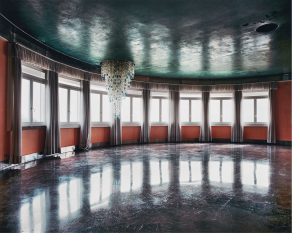
UNTITLED (WINDOWS), 2011. Chromogenic print; signed and numbered 2/5 to label verso. 52 x 61.75 in — 132.1 x 156.8 cm. Estimate $10,000-$15,000
Lynne Cohen, UNTITLED (WINDOWS), 2011
Of her practice, Lynne Cohen explained: “I prefer to allude to things and leave it to the viewer to fill in the details. Like Brecht and Godard, I want the audience to do some work.” Cohen has long focused on photographing “found environments”: empty spaces bereft of human presence, yet purpose-built for human needs.
Cohen leaves most of the interpretation of these spaces to the viewer, asking them to project their own experiences and anxieties of place. While early in her career Cohen would label images with more specific titles, these were soon pared down in favour of more vague and concise titles. This evolution of her titles is reflected in the two works on offer in this auction, one from 1977, Indoor Swimming Pool Display, Swimming Pool Store, Ottawa, and her very large work Untitled, (Windows) from 2011. Both spaces are both novel and familiar, a peculiar mix of banality and strangeness where function often triumphs over aesthetics.
Canadian writer James D. Campbell noted that “Cohen has always focused on these uncanny interiors, building up a remarkable inventory of images that were initially mostly executed in black and white. She seems to choose her locations for their sheer strangeness and radically indeterminate character and is reluctant to share their site-specificity. Now colour has been brought into the mix in a way that accentuates their implicit surreality and adds dimensionality. Images of meticulously built places for purposes that are heretofore unknown to us and that would remain unknowable but for their laconic titles, they nevertheless appear to have arrived from an extravagant elsewhere. If the medium of photography itself has been built upon a dark heart of deception, then Cohen is a beautiful liar. […] Cohen’s places hew to another order of significance altogether and while they share some of the same parentheses, they get under our skin, and yield a frisson – as though they were surgical theatres for a photographer’s wayward trepanning operations.” (1)
(1) https://www.frieze.com/article/lynne-cohen
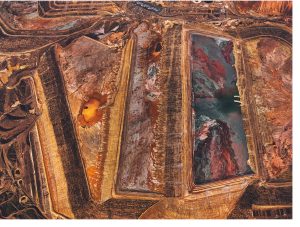
Edward Burtynsky, MORENCI MINE #2, CLIFTON, ARIZONA, USA, 2012 (FROM THE CONTACT PHOTOGRAPHY COLLECTION)
Since the creation of the CONTACT Photography Festival in 1997, this community-based event helps to support and unite artists from Canada and around the world. The proceeds from the sale of the works consigned to Waddington’s by the CONTACT Photography Festival help to expand viewership for the best examples of photography on the market today, and further the creative possibilities of the medium in the past, present, and future.
Burtynsky writes about the subject of this photograph, “open-pit mines are wounds we’ve inflicted, and the wonderment they excite easily becomes tinged with pangs of remorse or dread.” Burtynsky calls this storm of feeling ‘‘a reversal of the sublime. In the beginning, ‘the sublime’ meant us in fear of nature,’’ he explains. “We would look up at a thundercloud or mountain, or across a heavy sea, and be ‘“awe-struck” or powerless. But fast forward to the Industrial Revolution, and 150 years after that, and now we are the awesome and fearsome force that’s reshaping the planet.’’(1)
(1) https://www.nytimes.com/interactive/2015/10/25/magazine/25mag-copper.html
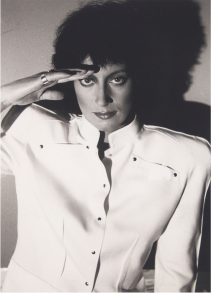
Canadian art collective General Idea created the artwork for Rough Trade’s album “Avoid Freud,” released in 1980. This image was taken by Jorge Zontal during one of the photo shoots for the album. 7 x 5 in — 17.8 x 12.7 cm. Estimate $7,000-$10,000
Jorge Zontal, “AVOID FREUD” ALBUM SHOOT – SALUT
Bursting onto the music scene in the late 1960s, Canadian rock icon Carole Pope unapologetically surpassed boundaries and advocated for LGBTQI+ visibility decades before the acronym existed and before sexual orientation was included in the Canadian Charter of Rights and Freedoms. Throughout her career, as half of the musical duo Rough Trade, and as a solo new-wave vocalist, Pope’s lyrics have always been provocative and sex-positive – making her “a fixture in Canada’s queer community.”(1)
Waddington’s is honoured to offer two never-before-seen photographs, lot 34 and lot 35, from the Rough Trade Avoid Freud album cover shoot photographed by Jorge Zontal, a member of the famed Canadian art collective General Idea. Having recently acquired the Avoid Freud contact sheet for the Art Gallery of Ontario’s permanent collection, Curator of Photography Sophie Hackett emphasizes the importance of this particular album shoot stating: “Made for Rough Trade’s 1980 album Avoid Freud — featuring their most well-known track ‘High School Confidential’ — the contact sheet of lead singer Carole Pope is a study in icon-making. Posing in a Thierry Mugler jacket, with a martini glass, Pope is the epitome of Queer cool. General Idea once again deploys the photographic image for its symbolic power and skewers it at the same time.”(2)
This photograph comes to Waddington’s from the personal collection of Carole Pope, courtesy of United Contemporary.
(1) Oliver Skinner et al., “Carole Pope: The Crotch Grab Heard around the World | Super Queeroes,” CBCnews, accessed April 17, 2024
(2) Burke Paterson and Melanie Trojkovic, “AGO ACQUISITION CAROLE POPE PORTRAIT BY GENERAL IDEA,” United Contemporary, November 5, 2022

Chuck Close, SELF PORTRAIT PORTFOLIO, 2002
Chuck Close is well known for his portraits and self-portraits. He made more than a hundred works of his own face during his career. Close was face-blind since his youth, and it is this incapacity to remember a face that motivated this part of his practice. Following an accident in 1988 which left him quadriplegic, Close returned to the easel to explore the limits of disabilities, old and new. In retrospect, Close said: “Everything in my work is directly related to my learning disabilities. […] People’s faces have urgency for me. I don’t care about anything as much as knowing who people are.” (1)
Close’s photographic practice was initially intended to support his realist paintings. His first large and impactful self-portrait, Big Self-Portrait, 1967–1968, purchased by the Walker Art Center in Minneapolis, is an oil on canvas made after a photograph taken by the artist. Fascinated by the photographic process, Close investigated the daguerreotype, the Polaroid and even the Woodburytype. His portraits of celebrities include Kate Moss, Brad Pitt, Alex Katz and other defining personalities of our time.
This Self-Portrait Portfolio, 2002, a suite composed of five self-portraits shows the artist at the age of 62, attempting to capture different angles of his face from one side to the other, forming a sort of topography of his head as if to keep track of his face and features.
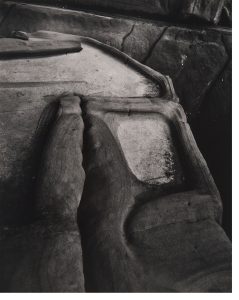
Edward Weston credit stamp, printed and signed by Cole Weston to the credit stamp verso; titled, dated, and inscribed “17R” by Cole Weston in pencil to mount verso. Image 9.1 x 7.2 in — 23 x 18.2 cm. Estimate $3,000-$5,000
Edward Weston – POINT LOBOS, 1929
With a program centred on photography, the Deja Vue Gallery was one of the first spaces in Toronto to champion the medium. The diversity of the Gallery’s collection includes Canadian artists Richard Harrington and Yousuf Karsh, alongside international artists including André Kertész, Phillipe Halsman, Jerry Uelsmann, Roman Vishniac, Howard Bond and Edward Weston.
Weston’s Western landscapes, including Rancho Sonoma, 1937, Point Lobos, 1929, Kelp, 1930, and Wing of Pelican, 1931 all represent quintessential parts of the artist’s oeuvre. Part of the Group f/64 along with Ansel Adams, Willard Van Dyke and Imogen Cunningham, Weston focused on precise studies, and his work greatly influenced the aesthetics of American photography.
The final images made by the artist were taken in Point Lobos in 1948, before Parkinson’s disease made his work no longer possible. His legacy is carefully maintained by his sons Brett and Cole, who have produced prints using the original negatives per the instructions of their father for approximately 40 years.
ABOUT THE AUCTION
Photographs in Partnership with CONTACT Photography Festival is offered online May 11–16, 2024.
Waddington’s is proud to offer this auction in partnership with CONTACT Photography Festival. The auction features a significant collection of photographs from the archives of Toronto’s former Deja Vue Gallery including masterworks by Richard Harrington, Edward Weston, and Yousuf Karsh. Other highlights include works by Peter Beard, Edward Burtynsky, Chuck Close, Imogen Cunningham, Stan Douglas, Philippe Halsman, André Kertesz, and two unique portraits from the personal collection of Carole Pope. A selection of contemporary photography including past CONTACT Photography prize winners such as Dana Claxton, Suzy Lake, and Ken Lum will also be available. All proceeds from the sale of CONTACT lots will benefit the organization.
Previews will be available at our Toronto gallery, located at 275 King Street East, Toronto:
Sunday, May 12 from 12 noon to 4 pm
Monday, May 13 from 10 am to 5 pm
Tuesday, May 14 from 10 am to 5 pm
Or by appointment.
Please contact us to find out more, including consignment opportunities.
Related News
Meet the Specialists

Goulven Le Morvan
Director, International Art, Montreal
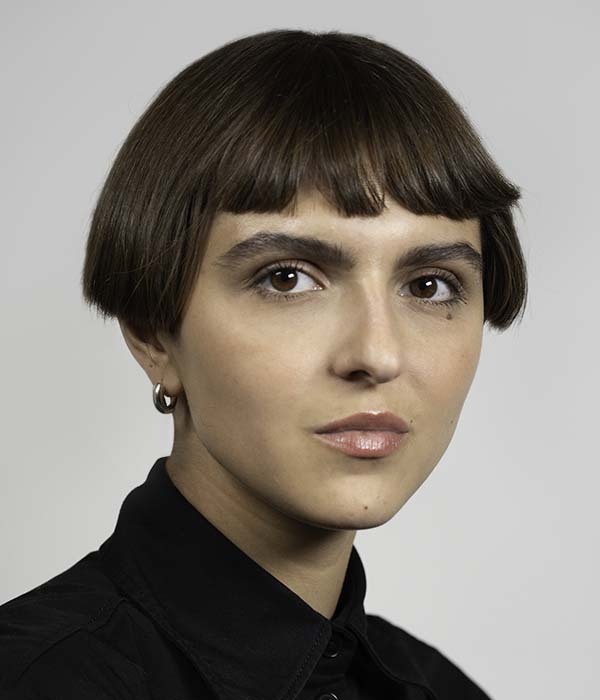
Alicia Bojkov
Consignment Specialist, International Art
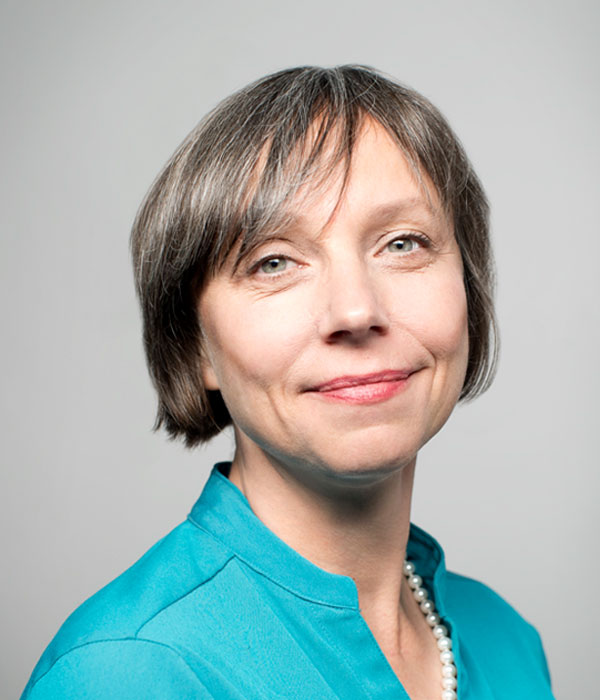
Liz Edwards
Director, Canadian Fine Art



